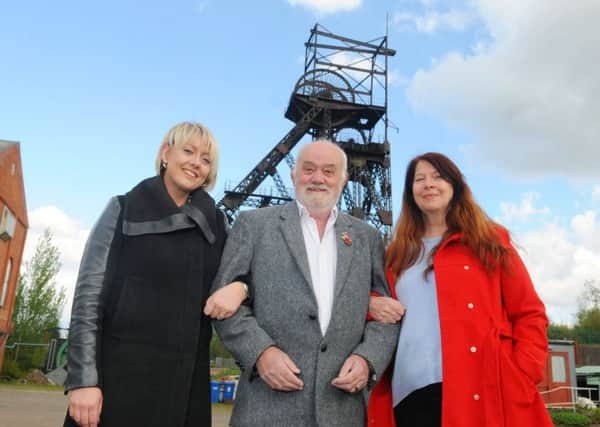Campaign to remember lost heroes of pit disaster


The Red Rose Trustees, who run the Astley Green Colliery Museum, want to commemorate those lives lost and the acts of incredible bravery when an underground fire broke out at the mine in 1939.
Five men lost their lives in a series of explosions and a further four were injured.
Advertisement
Hide AdAdvertisement
Hide AdThe fatalities included the pit manager who died while leading the firefighting operations. Rescue attempts were hindered by the build-up of toxic gasses below ground but many men risked their lives to bring victims and the bodies up to the surface.
Astley was one of the newer pits to have been sunk (in 1908), was employing 2,000 men at the time of what was the first serious accident to happen there.s
The incident is perhaps not as well known as other high-profile local mining disasters such as those that occurred at Westhoughton’s Pretoria Pit and Golborne years before when casualties were much higher.
But the team at the Astley mine-turned-tourist attraction now wants to rectify this.
Advertisement
Hide AdAdvertisement
Hide AdRed Rose Trustees chairman Trevor Barton MBE said: “We all know about the Pretoria Pit disaster and the one in Golborne and yet there was one in Astley too.
“I just can’t believe this disaster took place and there’s absolutely nothing to mark it.
“We want to build a permanent memorial to these people.
“Some remarkably brave things went on underground to save people’s lives.
“We’ve given ourselves two years and hopefully by the 80th anniversary of the disaster we will have something that is fitting.”
Advertisement
Hide AdAdvertisement
Hide AdThe memorial will stand on site at the Higher Green Lane pit, which has now been preserved to give visitors an idea of what the mining industry was really like.
Discussions on the design of the memorial and how it will be funded are still at an early stage.
The team behind the commemoration efforts would particularly like to track down any living relatives of colliers who worked at the Astley pit at the time of the disaster.
Mr Barton said the trustees are determined to preserve the borough’s heritage and hoped that the unveiling ceremony for the memorial would be a high-profile occasion.
Advertisement
Hide AdAdvertisement
Hide AdHe said: “This is the only pithead left in Lancashire and it’s a remarkable place.
“It’s a piece of our heritage and there’s not likely to be anything like it again.
“We want to do something special and we want to celebrate its history, and one way to do that is by telling this story and getting this tale of derring-do out there.”
Anyone wishing to contribute to the memorial campaign can email [email protected]
Advertisement
Hide AdAdvertisement
Hide AdTerror and tragedy as blast caused death and chaos underground
The fire broke out at around 12.30am one night in June 1939 in the Crombouke Mine, with the 1,000-strong night shift having to be withdrawn and 40 men left with officials and firefighters to tackle the blaze.
The five men killed were pit manager JH Hewitt, under-looker G Griffiths, from Astley, Tyldesley fireman J Keegan and colliers Eli Smith from Atherton and William Warhurst from Astley.
W Middleton, of Tyldesley, John Laughton from Leigh, Frank Morris of Tyldesley and William Smith from Astley were also injured.
Advertisement
Hide AdAdvertisement
Hide AdEli Smith’s own father had himself died down the same mine 19 years earlier.
Some of the injured men had to carried or dragged out of the pit and the men used sand and a tank of water to fight the flames.
The coroner particularly remarked on the bravery of those involved in the disaster and rescue effort at the inquest the following month. A verdict of misadventure was recorded.